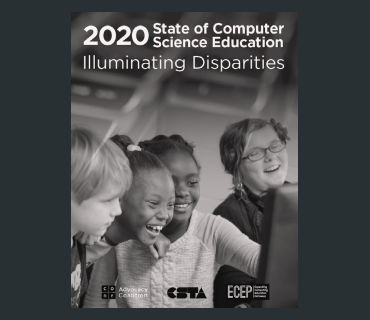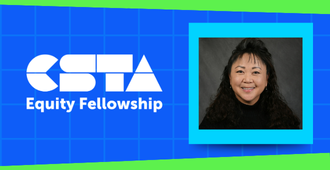
The challenges of 2020 have pushed us to more deeply examine our strategies for addressing the persistent inequities that remain in computer science education.
Full Story
The world has changed drastically since we released the 2019 State of CS Report in collaboration with Code.org and the Computer Science Teachers Association (CSTA). Our communities have been impacted by the global COVID-19 pandemic, schools all over the country are moving toward virtual instruction, and racial injustice has become a national focal point. The challenges of 2020 have pushed us to more deeply examine our strategies for addressing the persistent inequities that remain in computer science education.
Our advocacy for CS education policy focused on equity and our commitment to increasing diversity in K-16 courses means we must continually hold ourselves accountable. We must also commit to being uncomfortable. In the 2020 State of Computer Science report, we are asking you to learn alongside us. In the 2020 report you will see some new terminology, new datasets, and new calls to action. Our goal is to keep getting better at producing a collaborative report that fully captures the state of CS education. Here are a few changes in this year’s report:
- Discontinuing use of the label Underrepresented Minority Students (URMS). This term does not adequately define the students who have been historically marginalized in CS or the obstacles they face. We are committing to disaggregating the student data in order to clearly identify the students who are missing in CS pathways. As an Alliance we are designing and implementing our own data systems, identifying common broadening participation in computing indicators, and disseminating the data to bolster change efforts.
- Addressing Intersectionality. There are few data systems that disaggregate the data to a level that allows us to use an intersectional lens when considering the data. We can look at the data and say X percentage of girls, or X percentage of African American students, when we really need to consider the whole student, meaning the combination of race, class, gender, etc. If we are not considering the whole student, we are only identifying a portion of their CS story, and potentially developing inadequate resources and interventions.
- Recognizing the limitations of lagging indicators. The student data in this report and prior reports focuses on AP CS data. This data is readily available across states, however it captures a limited view of CS education participation. In order to understand the root causes of gaps in access and participation in CS, we need to expand our data sets. As partners, we are working collaboratively to collect data that paints a full picture of which students have access to CS, which students are being recruited into CS, and which students are being retained in CS pathways.
We are committed to explicitly centering equity at the forefront in our actions as national organizations. In turn, we are asking the same of each of you reading this report. Continue to ask the tough questions, and realize there is significant work to be done. Continue to pivot when needed and continue to refine your CS advocacy and policy strategies to ensure that broadening participation in computing is at the core of your efforts.
As part of our on-going commitment to increasing diversity in CS education, ECEP and CSTA will be announcing new funding for CSTA Chapters. This funding will allow CSTA chapters to offer more equity-focused events and activities. Stay tuned for a formal announcement in the next two weeks.
– CSTA & ECEP




